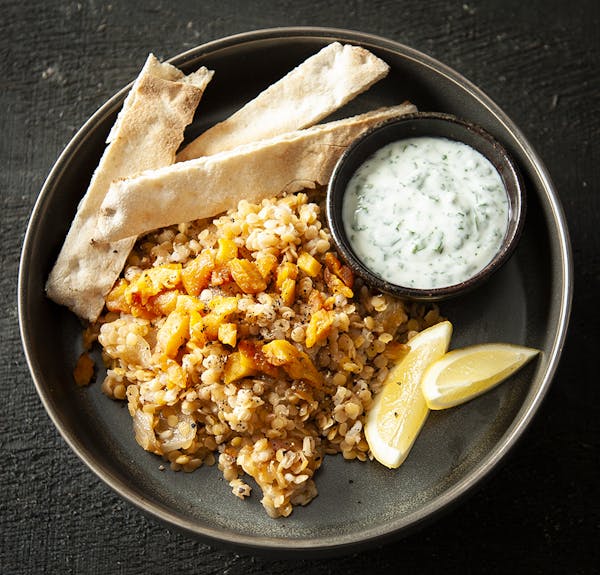In this season of gray skies, mud and slush, I crave dishes with bold colors and fragrant spices from the cuisines of warmer climates. These are foods that are light and simple yet satisfying enough to ward off the lingering chill. Take lentils and grains, two ancient foods that are inseparable in the dishes of India, Persia and across southern Europe.
Lentils are the oldest cultivated bean. They store well, cooks quickly, are easy to work with, and a great staple to keep on hand. Here are the four basic types of lentils.
• Black beluga lentils are small, shiny and black and retain their shape and texture when cooked, making them a good choice for salads. They cook in about 20 to 25 minutes.
• French green (du Puy) lentils are tiny and blue-green, hold their shape and become creamy when cooked. These cook in about 25 to 30 minutes.
• Brown or green lentils are a bit larger and can turn very soft and tender when cooked. They cook in about 30 to 40 minutes.
• Red and orange lentils turn velvety and soft when cooked. They cook in about 15 minutes.
Unlike most dry beans, lentils do not need to be soaked before cooking. And while the textures and flavors differ among the main varieties, I often use them interchangeably. The cooking times for all lentils will vary depending on where they are from and how long they've been stored.
A good rule of thumb is to run the lentils under cold water, then combine 1 cup of them with 3 cups of water; bring to a boil over high heat, reduce to a simmer, cover and cook until they've reached the desired consistency. Salt them after they've cooked (salting in advance toughens them).
Though rice is a universal partner to lentils, our local barley, farro, wheat berries and wild rice make a terrific match in pilafs, soups and stews.
Beth Dooley is the author of "In Winter's Kitchen." Find her at bethdooleyskitchen.com.

Helen Simonson is in Jane Austen mode with 'The Hazelbourne Ladies Motorcycle and Flying Club'
New Orleans' own PJ Morton returns home to Jazz Fest with new music

Biden awards the Medal of Freedom to Nancy Pelosi, Medgar Evers, Michelle Yeoh and 15 others
![Mia's former associate curator of Native American Art Jill Ahlberg Yohe.
] ELIZABETH FLORES • liz.flores@startribune.com](https://arc.stimg.co/startribunemedia/KLM6KWE7YJDQRICKFBZ3QEYRPA.jpg?h=91&w=145&fit=crop&bg=999&crop=faces)
